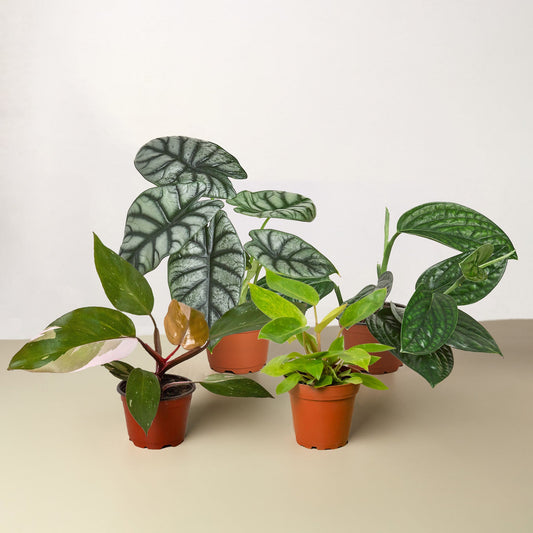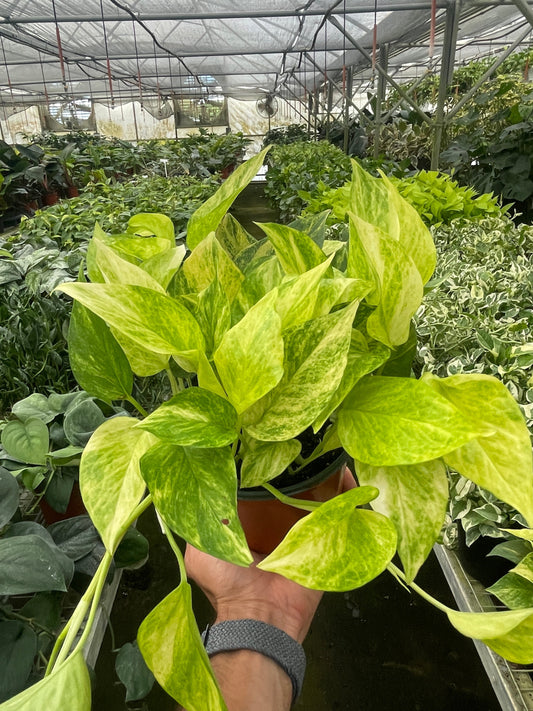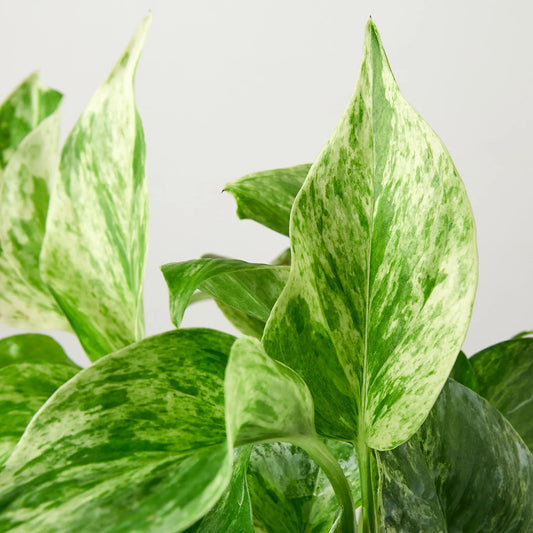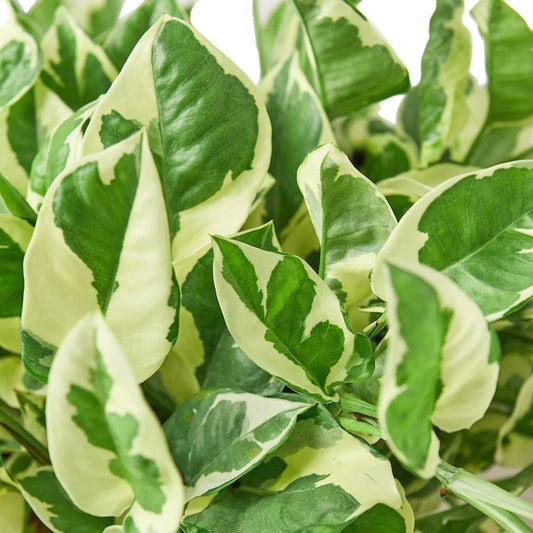Philodendron Paraiso Verde Aerial Roots: Everything You Need to Know
Cafe Planta Team
Philodendron Paraiso Verde is a stunning plant that captures the hearts of plant lovers with its unique, variegated leaves. But there's more to this plant than meets the eye—specifically, its aerial roots. These intriguing features not only add to the plant's charm but also play a vital role in its health and growth.
In this article, we'll unravel the mystery behind Philodendron Paraiso Verde's aerial roots. We'll explore their purpose, how to care for them, and what they mean for your plant's overall well-being. Whether you're a seasoned plant parent or new to the world of Philodendrons, you'll find practical tips and insights to nurture these fascinating roots.
What Are Aerial Roots?
Aerial roots are a unique type of root that grows above the soil, often appearing along the stem or branches of a plant. In the wild, these roots help plants like the Philodendron Paraiso Verde anchor themselves to trees and other structures. They absorb moisture and nutrients from the air, assisting the plant in thriving in its natural environment.
For indoor plant parents, aerial roots might seem like a quirky addition to your plant's appearance. But they serve a practical purpose, especially for plants that originate from tropical climates. These roots can be a sign of a happy, healthy plant that's growing and adapting to its surroundings.
Interestingly enough, aerial roots also have the potential to transform into regular roots if they come into contact with soil. This adaptability is part of what makes Philodendrons such versatile and resilient houseplants.
The Role of Aerial Roots in Philodendron Paraiso Verde
In Philodendron Paraiso Verde, aerial roots play several roles. First and foremost, they help the plant climb and spread, mimicking how it would grow in the wild. This climbing ability is part of what makes these plants so appealing for indoor spaces, as they can create stunning vertical displays.
Moreover, aerial roots contribute to the plant's overall health by absorbing moisture and nutrients from the air. This feature is particularly beneficial in a humid environment, where the roots can draw in additional hydration without relying solely on soil moisture.
Another interesting aspect of these roots is their role in propagation. When you decide to propagate your Philodendron Paraiso Verde, aerial roots can be a helpful indicator of where to make your cuttings. These roots increase the chances of successful propagation, as they provide the new cutting with an established root system.
How to Care for Aerial Roots
Caring for aerial roots is a relatively straightforward process, but it requires a bit of understanding and patience. Here are some tips to help you nurture these unique features of your Philodendron Paraiso Verde:
- Humidity: Ensure your plant's environment is adequately humid. This can be achieved by misting the plant, using a humidifier, or placing it near a pebble tray filled with water. Higher humidity levels will allow the aerial roots to absorb moisture from the air more effectively.
- Support: Provide a support structure like a moss pole or trellis for your plant to climb. This will encourage the aerial roots to attach and help your Philodendron grow upward.
- Pruning: If you find that the aerial roots are becoming too unruly, you can prune them back. However, be cautious not to remove too much, as they play a vital role in the plant's health.
- Cleaning: Keep the roots clean by wiping them gently with a damp cloth. This will remove dust and debris, ensuring they can absorb moisture efficiently.
Common Issues with Aerial Roots
While aerial roots are generally a sign of a healthy plant, they can sometimes present challenges. Here are some common issues you might encounter and how to address them:
Overgrowth
If your Philodendron's aerial roots are growing excessively, it might be a sign that the plant is searching for more support or moisture. Consider providing a climbing structure or increasing humidity levels to satisfy its needs.
Dryness
Dry aerial roots might indicate that the surrounding air is too dry. This can be remedied by increasing the humidity around your plant through misting or using a humidifier.
Rot
On the other hand, if the roots appear mushy or dark, they might be suffering from rot. This can occur if the plant's environment is too humid without adequate air circulation. Ensure that your plant is in a well-ventilated area and avoid over-misting.
Propagation Using Aerial Roots
One of the joys of having a Philodendron Paraiso Verde is the ability to propagate it and share it with friends or expand your collection. Aerial roots play a significant role in this process. Here's a simple guide to propagating your plant using its aerial roots:
- Select a Stem: Choose a healthy stem with at least one node and aerial root. Nodes are the points where leaves and roots grow from the stem.
- Make the Cut: Use clean, sharp scissors or pruning shears to cut the stem just below the node, ensuring the aerial root is included.
- Prepare the Cutting: Remove any lower leaves from the cutting to expose the node and aerial root.
- Root the Cutting: Place the cutting in water or directly into well-draining soil. If using water, change it regularly to prevent stagnation.
- Wait for Growth: Over time, the aerial root will develop into a full root system, and you can transplant the new plant once it shows signs of growth.
Incorporating Philodendron Paraiso Verde in Interior Design
The Philodendron Paraiso Verde, with its unique aerial roots, offers endless possibilities for interior design. Here are some creative ways to incorporate this plant into your home decor:
- Vertical Gardens: Use the plant's climbing nature to create a living wall or vertical garden. Aerial roots will help the plant cling to structures, adding a touch of greenery to your walls.
- Hanging Displays: Utilize hanging planters to showcase the plant's trailing vines and aerial roots. This can add an element of elegance and movement to any room.
- Table Centerpieces: Place the Philodendron in decorative pots on tables or shelves. The aerial roots add a unique texture and interest to the arrangement.
- Bathroom Oasis: Given the plant's love for humidity, it thrives in bathrooms, where it can absorb moisture from the air. Let it climb around mirrors or windows for a lush, spa-like vibe.
Environmental Benefits of Aerial Roots
Aerial roots aren't just beneficial for the plant—they can also positively impact your home environment. Here's how:
Improved Air Quality: Philodendrons are known for their ability to purify the air by removing toxins. Aerial roots can enhance this capability by increasing the surface area available for filtration.
Humidity Regulation: These roots can help maintain humidity levels in your home, making the air more comfortable to breathe. This is especially beneficial in dry climates or during winter months when indoor air tends to be drier.
Natural Aesthetics: The presence of aerial roots adds a natural, organic element to your home decor, promoting a sense of tranquility and connection to nature.
Personal Experiences with Philodendron Paraiso Verde
As someone who's spent countless hours caring for and observing Philodendron Paraiso Verde, I've learned a few things along the way. One memorable moment was when I first noticed the aerial roots starting to attach themselves to a nearby bookshelf. It was a gentle reminder of how adaptable and resourceful these plants can be.
There was also a time when I over-misted the plant, leading to some root rot. It was a valuable lesson in finding the right balance between humidity and airflow. It seems that every plant has its quirks, and learning from these experiences is part of the joy of being a plant parent.
FAQs About Aerial Roots
Here are some common questions plant parents have about Philodendron Paraiso Verde's aerial roots, along with answers to help you care for your plant:
Can I cut off aerial roots?
Yes, you can trim aerial roots if they're becoming unmanageable. However, it's best to do so sparingly, as these roots are beneficial for the plant's health.
Do aerial roots need to be in soil?
No, aerial roots do not need to be in soil. They can absorb moisture and nutrients from the air, which is why they're called "aerial" roots.
Why are my aerial roots turning brown?
Brown aerial roots might indicate dryness or lack of humidity. Try increasing the humidity around your plant to help the roots thrive.
Final Thoughts
Philodendron Paraiso Verde's aerial roots are more than just an interesting feature—they're an essential part of what makes this plant so special. By understanding their purpose and how to care for them, you can ensure your plant remains healthy and vibrant.
At Cafe Planta, we believe that plants have the power to bring people together and inspire us to connect with nature and each other. Whether you're an experienced plant parent or just starting out on your plant journey, we're excited to share our love of plants with you and help you create a beautiful, thriving plant collection in your home. If you have any questions, please feel free to email us or DM us on Instagram.



















